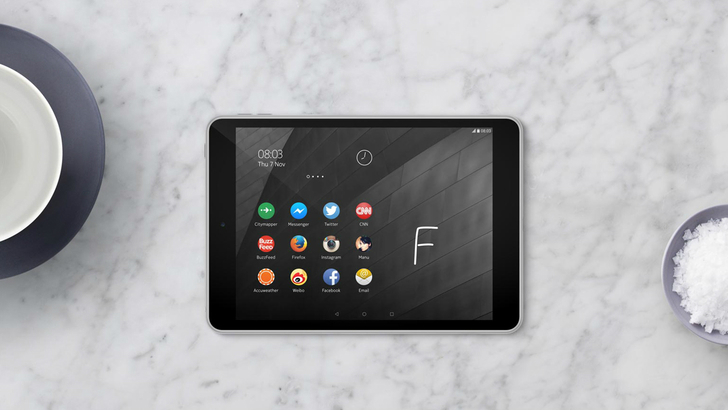Nokia announces its Android-running iPad mini rival, the N1
Nokia could hit the ground running with its first Android slate

Nokia, or rather Foxconn licencing Nokia's name, has just announced its first Android tablet, the N1. Highlights include a one-piece aluminium construction coming in at a slim and light 6.9mm and 318g, and a 7.9-inch 2048 x 1536 IPS display. That's 329 pixels per inch, which is roughly the same as the 324 ppi iPad mini 3.
It certainly seems to be one of the better looking tablets around, though it also looks remarkably similar to Apple's mini.
Under the hood there's a 2.3GHz 64-bit Intel Atom Z3580 processor and 2GB of RAM, which should give it a reasonable amount of power. It's rocking 32GB of storage, though seemingly there's no microSD card slot, which could prove limiting for media fans.
We're never ones to rave about tablet cameras, but the N1 has an 8MP main camera and a 5MP front-facing one so if you absolutely must use it to take photos it should hopefully at least be able to take some half decent ones.
Back in the game
The Nokia N1 also has dual stereo speakers and a 5300 mAh battery. No stats have yet been released, but when you consider that the similarly0sized Sony Xperia Z3 Tablet Compact has just a 4500 mAh juice pack, it bodes well.
The slate, which runs Android 5.0 Lollipop, comes overlaid with the Nokia Z launcher. It adapts to you, with the aim of keeping the most relevant apps and features front and centre, while scribbling a letter on the screen will enable you to quickly search for other apps.
Interestingly it also supports a reversible USB connector, which can be plugged in either way round meaning you won't have to do the USB dance any more, though it only supports USB 2.0.
Sign up for breaking news, reviews, opinion, top tech deals, and more.
Set to retail for $249 (around £159 / AU$285) it should also be temptingly cheap, substantially undercutting the likes of the iPad mini 3. China will get the N1 first, in time for Chinese New Year on February 21, with Russia and select European markets set to follow.
James is a freelance phones, tablets and wearables writer and sub-editor at TechRadar. He has a love for everything ‘smart’, from watches to lights, and can often be found arguing with AI assistants or drowning in the latest apps. James also contributes to 3G.co.uk, 4G.co.uk and 5G.co.uk and has written for T3, Digital Camera World, Clarity Media and others, with work on the web, in print and on TV.